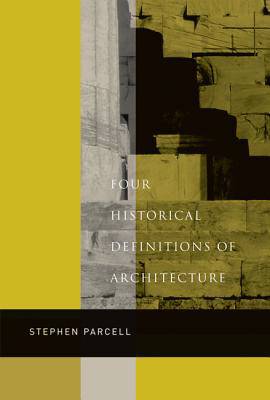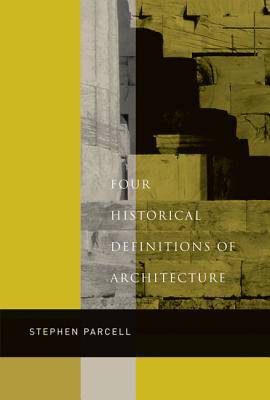
Bedankt voor het vertrouwen het afgelopen jaar! Om jou te bedanken bieden we GRATIS verzending (in België) aan op alles gedurende de hele maand januari.
- Afhalen na 1 uur in een winkel met voorraad
- In januari gratis thuislevering in België
- Ruim aanbod met 7 miljoen producten
Bedankt voor het vertrouwen het afgelopen jaar! Om jou te bedanken bieden we GRATIS verzending (in België) aan op alles gedurende de hele maand januari.
- Afhalen na 1 uur in een winkel met voorraad
- In januari gratis thuislevering in België
- Ruim aanbod met 7 miljoen producten
Zoeken
Omschrijving
Where does architecture belong in the larger scheme of things? Is it a liberal art? Is it related to painting, music, medicine, or horse training? Is it timeless, or does it have a beginning? To pursue such questions, Stephen Parcell investigates four historical definitions of Western architecture: as a techné in ancient Greece, a mechanical art in medieval Europe, an art of disegno in Renaissance Italy, and a fine art in eighteenth-century Europe. These definitions situated architecture within larger classifications of knowledge, establishing alliances between architecture and other disciplines. They also influenced elements of architectural practice that we now associate with three characters (designer, builder, and dweller) and three things (material, drawing, and building). Guided by current architectural questions, Parcell examines writings in these historical periods and focuses on practical implications of texts by Hugh of St Victor, Leon Battista Alberti, and Etienne-Louis Boullée. Four Historical Definitions of Architecture shows how the concept of architecture and elements of architectural practice have evolved over time. Even the word "architecture" has ambiguous roots.
Specificaties
Betrokkenen
- Auteur(s):
- Uitgeverij:
Inhoud
- Aantal bladzijden:
- 352
- Taal:
- Engels
Eigenschappen
- Productcode (EAN):
- 9780773539563
- Verschijningsdatum:
- 11/04/2012
- Uitvoering:
- Hardcover
- Formaat:
- Genaaid
- Afmetingen:
- 165 mm x 231 mm
- Gewicht:
- 635 g

Alleen bij Standaard Boekhandel
+ 155 punten op je klantenkaart van Standaard Boekhandel
Beoordelingen
We publiceren alleen reviews die voldoen aan de voorwaarden voor reviews. Bekijk onze voorwaarden voor reviews.









